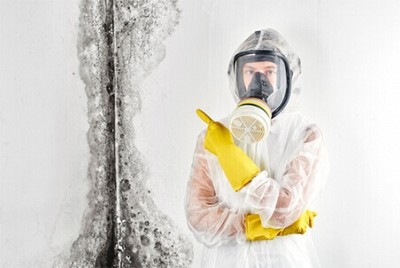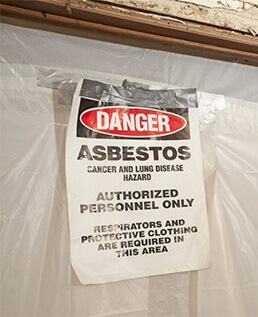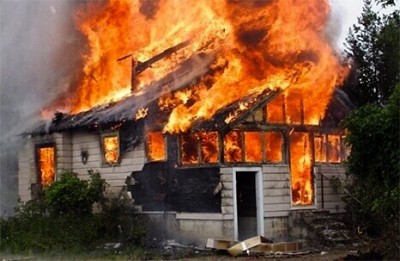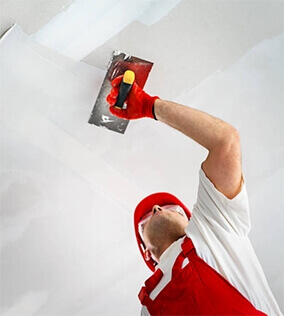How Do I Know if My Floor Tiles Have Asbestos?
Posted in Asbestos Removal, on March 26, 2021
Depending on the age of a home and the floor installation methods at the time, your floor tiles may contain asbestos material. In such situations, it’s essential to know how to deal with the material, whether to remove the material or simply leave things as they are.
In some cases, when asbestos removal is required, it’s essential to work with a professional. Homeowners shopping for asbestos removal in Toronto and the GTA should work with a professional who has the necessary abatement experience and expertise.
.png) Asbestos was quite common in construction materials many decades ago. It was a durable material with various benefits but was banned in the 1980s because of the substantial associated health risks. Today, asbestos is banned from use in most building materials.
Asbestos was quite common in construction materials many decades ago. It was a durable material with various benefits but was banned in the 1980s because of the substantial associated health risks. Today, asbestos is banned from use in most building materials.
While asbestos products are officially banned from use, it doesn’t mean that installed products (including floor tiles) must be removed and replaced. Indeed, many elements already installed in a home may not necessarily require professional asbestos removal.
Many homeowners are unknowingly living with asbestos-laden materials in their homes. When left untouched, there is a minimal health risk. But during a renovation or home improvement project, there's a chance that asbestos materials may be released into the air and present health risks.
Common Floor Materials That Contain Asbestos
Decades ago, vinyl manufacturers mixed asbestos material into their vinyl products for added resilience and insulating properties. In the construction industry, asbestos materials were an essential element in providing fire-resistance where required. Products like vinyl floor tiles and vinyl sheet flooring were prevalent – they were inexpensive to manufacture and easy to install.
Vinyl Floor Tiles
Vinyl floor tiles were durable and inexpensive at the time. By mixing asbestos into the floor tiles, the surface was extremely hardwearing. As such, it was an excellent option for the wear and tear of homes, schools and hospitals.
Vinyl Sheet Floors
Similar to floor tiles, vinyl sheet flooring was both economical and long-lasting. More than that, there were endless aesthetic options to suit homeowners' tastes. Unfortunately, the asbestos backing posed some health risks.
Today, homeowners living in older homes may still have asbestos-laden flooring in parts of the house. For asbestos removal in Toronto and the GTA, it’s best to have a professional manage the process from start to finish.
How To Inspect Floor Tiles For Asbestos
The best way to determine if floor tiles contain asbestos is to test them professionally. Yes – there are DIY asbestos testing kits at the local home centre, but it’s better to have an expert on hand to do it right the first time.
With asbestos, there is no reason to take a chance with the potential health risks. Indeed, some municipalities require that asbestos testing be undertaken by a licensed professional. In this way, viable remedies are offered at the same time.
Asbestos-laden floor tiles start to look “stained” or “discoloured” over time. It's a sign that either the tile or the adhesive underneath contains asbestos. In some cases, when tiles are loose, it's possible to see the black asbestos adhesive.
Indications That You Might Have Asbestos
Quite often, many homes built before 1980 contained asbestos-laden materials. With floor tiles, specific sizes were manufactured with asbestos (9”, 12”, and 18”). One option for dealing with asbestos floor tiles is to leave them in place and cover them over with new flooring.
In older homes, vinyl floor tiles and vinyl sheet flooring likely did contain asbestos. Any attempt to remove these should be considered risky. When the flooring is disturbed during a home reno, asbestos fibres could be released into the air and pose serious potential health risks.
Asbestos materials were initially installed without understanding the extent of the health risks. Today, the safest approach is to test for asbestos before doing home improvements or home renovations. The DIY option for removing asbestos-laden materials poses dangers.
Asbestos Removal in Toronto and the GTA
It's surprising how much asbestos was used throughout a home over the years. It was used in insulation, around water pipes, in heating ducts, and in flooring tiles. When it comes to asbestos removal, the work must be done correctly. It's an extensive, intricate, and sometimes dangerous job.
At Canada’s Restoration Services, our in-house asbestos specialists take many precautions when removing asbestos. This ensures that our workers (and home occupants) are protected from airborne asbestos particles. Safety is the number one priority on every removal project.
With asbestos removal, professional remediation is recommended. Our people are certified and trained to provide guaranteed results. And we use the most advanced equipment and filtration systems to ensure that every fragment of asbestos is completely removed.
For Professional Asbestos Removal, Count on Canada’s Restoration Services
In addition to professional asbestos removal in Toronto and the GTA, Canada’s Restoration Services offers water damage services, mold inspection and removal, as well as smoke and fire damage restoration. Everything we do is designed to deliver optimum outcomes.
With asbestos removal, we identify the work scope, recommend the best possible remedy, and undertake the work in the safest environment. We service both residential and commercial properties and maintain the highest standard of workmanship on every job site.
When urgency is required, our remediation teams can arrive within an hour, and we're available 24/7 for emergency service. Learn more about Canada’s Restoration Services by calling one of our in-house specialists at 1-888-551-0514.







